
The Enchanting Waters of Lake Titicaca
Discover the mystique of Lake Titicaca, the world's highest navigable lake, offering a blend of stunning scenery, ancient ruins, and vibrant local culture.
Lake Titicaca, straddling the borders of Bolivia and Peru, is the highest navigable lake in the world, sitting at an altitude of over 3,800 meters. The lake is known for its stunning deep blue waters and the rich cultural heritage of the indigenous communities living around it. This majestic body of water is steeped in history and legend, believed to be the birthplace of the Inca civilization. Exploring Lake Titicaca offers a unique blend of natural beauty and cultural immersion. Visitors can take boat trips to the lake's islands, such as the famous Isla del Sol and Isla de la Luna. These islands are dotted with ancient ruins and terraced hillsides, providing breathtaking views and a glimpse into the region's past. The local communities are known for their traditional handicrafts and vibrant festivals, offering tourists a chance to experience their way of life firsthand. The town of Copacabana, located on the Bolivian side of Lake Titicaca, serves as a gateway to the lake's wonders. This charming town is home to the Basilica of Our Lady of Copacabana, an important pilgrimage site. From here, you can embark on various activities including hiking trails, visiting local markets, and enjoying fresh trout from the lake. The tranquil atmosphere and stunning landscapes make Lake Titicaca a must-visit destination for those seeking both adventure and relaxation.
Local tips in Lake Titicaca
- Pack for varying weather conditions, as temperatures can fluctuate significantly between day and night.
- Acclimatize to the high altitude by spending a day or two in Copacabana before exploring the lake.
- Try the local dish 'trucha' (trout) freshly caught from the lake at one of the lakeside restaurants.
- Hire a local guide to enrich your visit with stories and historical context about the islands and ruins.
- Visit during one of the local festivals to experience the vibrant traditional dances and music.
The Enchanting Waters of Lake Titicaca
Lake Titicaca, straddling the borders of Bolivia and Peru, is the highest navigable lake in the world, sitting at an altitude of over 3,800 meters. The lake is known for its stunning deep blue waters and the rich cultural heritage of the indigenous communities living around it. This majestic body of water is steeped in history and legend, believed to be the birthplace of the Inca civilization. Exploring Lake Titicaca offers a unique blend of natural beauty and cultural immersion. Visitors can take boat trips to the lake's islands, such as the famous Isla del Sol and Isla de la Luna. These islands are dotted with ancient ruins and terraced hillsides, providing breathtaking views and a glimpse into the region's past. The local communities are known for their traditional handicrafts and vibrant festivals, offering tourists a chance to experience their way of life firsthand. The town of Copacabana, located on the Bolivian side of Lake Titicaca, serves as a gateway to the lake's wonders. This charming town is home to the Basilica of Our Lady of Copacabana, an important pilgrimage site. From here, you can embark on various activities including hiking trails, visiting local markets, and enjoying fresh trout from the lake. The tranquil atmosphere and stunning landscapes make Lake Titicaca a must-visit destination for those seeking both adventure and relaxation.
When is the best time to go to Lake Titicaca?
Iconic landmarks you can’t miss
Reserva Nacional Titicaca
Discover the breathtaking landscapes and rich biodiversity of Reserva Nacional Titicaca, a true gem of nature and culture in Peru.
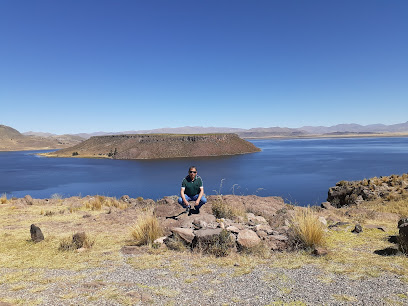
Port de Tiquina
Discover the vibrant atmosphere of Port de Tiquina, a bustling marina offering spectacular views and access to the breathtaking Lake Titicaca.
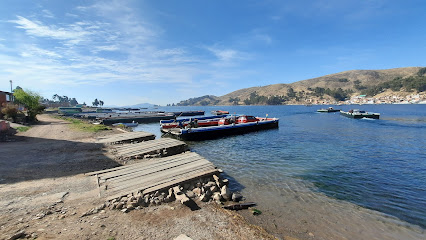
Faro de Conchupata
Discover the historical beauty of Faro de Conchupata, a stunning lighthouse in Oruro offering breathtaking views and a glimpse into Bolivia's rich heritage.
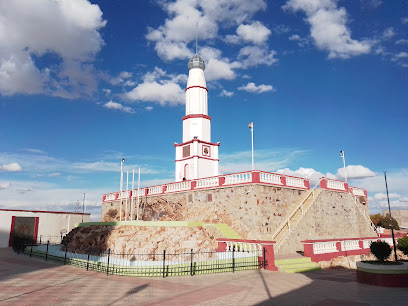
Sun Gate
Explore the Sun Gate in Tiwanaku, a stunning archaeological site that reveals the mysteries of ancient Andean civilizations and their connection to the cosmos.
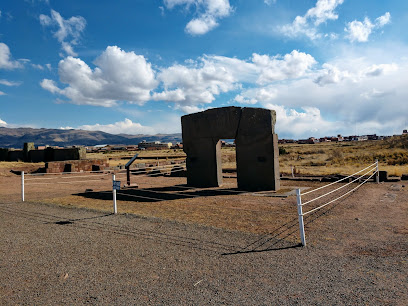
Typical Arc of Taquile
Explore the wonders of Taquile Island, where breathtaking views and rich indigenous culture await you on the shores of Lake Titicaca.
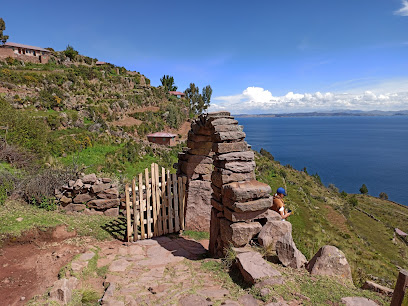
Taquile Island
Experience the breathtaking beauty and rich culture of Taquile Island, a hidden gem on Lake Titicaca known for its traditional weaving and stunning vistas.
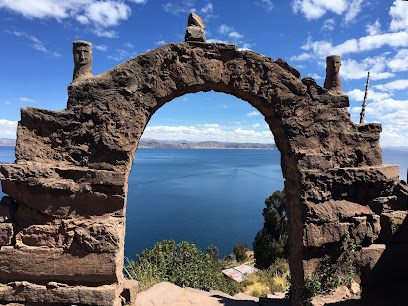
Basilica of Our Lady of Copacabana
Explore the breathtaking Basilica of Our Lady of Copacabana, a spiritual and cultural gem overlooking Lake Titicaca in Bolivia.

Kalasasaya
Explore the ancient wonders of Kalasasaya in Tiwanaku, Bolivia, where history and stunning landscapes converge in a timeless journey.
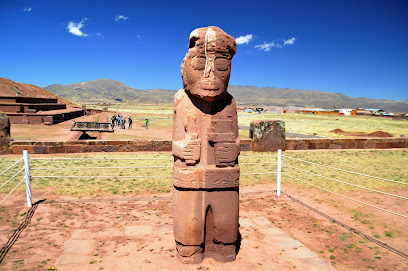
Hostal Las Olas
Experience breathtaking views and serene comfort at Hostal Las Olas in Copacabana, your perfect base for exploring Lake Titicaca.

Isla del Sol
Discover Isla del Sol, the sacred island on Lake Titicaca, where Incan history meets stunning natural beauty in Bolivia's breathtaking landscapes.
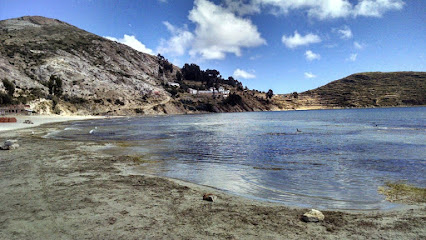
Amantaní
Discover the serene beauty and rich traditions of Amantaní Island, a cultural treasure in the heart of Lake Titicaca, Peru.
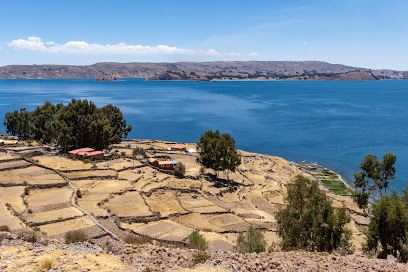
Aramu Muru
Discover the mystical Aramu Muru in Peru, an archaeological site that offers breathtaking views and a connection to ancient civilizations.
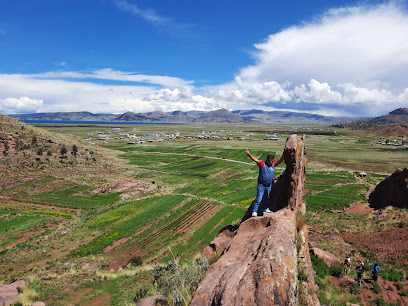
Strait of Tiquina
Explore the stunning Strait of Tiquina, a vital waterway of Lake Titicaca, where breathtaking views and rich local culture await every traveler.
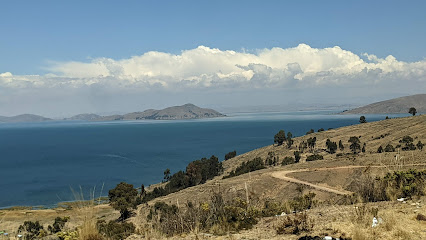
Chacaltaya
Explore Chacaltaya, Bolivia's majestic mountain peak, offering breathtaking views, rich history, and unforgettable adventure in the heart of the Andes.
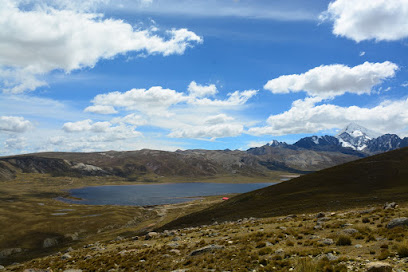
Huayna Potosí
Experience the breathtaking beauty of Huayna Potosí, a must-visit peak in Bolivia offering thrilling climbs and stunning views of the Andes.
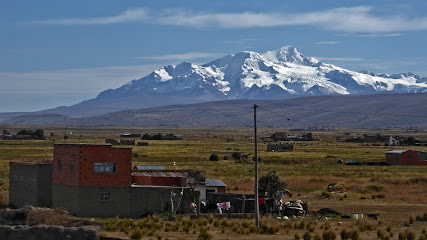
Unmissable attractions to see
Plaza Mayor de Puno
Experience the vibrant culture and stunning architecture at Plaza Mayor de Puno, the heart of Puno, Peru, where every visit is a celebration.
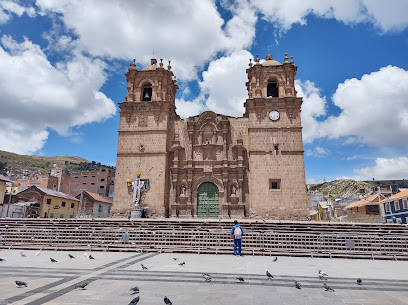
Pino Park
Discover the tranquil beauty of Pino Park in Puno, Peru, a perfect natural retreat for relaxation and cultural immersion.

Reserva Nacional Titicaca
Discover the breathtaking landscapes and rich culture of Reserva Nacional Titicaca, a national reserve in the Peruvian Andes, home to unique wildlife and vibrant communities.
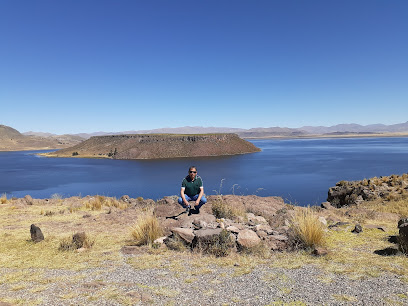
Mirador Puma de Puno
Discover the stunning panoramic views of Lake Titicaca from the Mirador Puma de Puno, a must-visit observation deck in Puno, Peru.
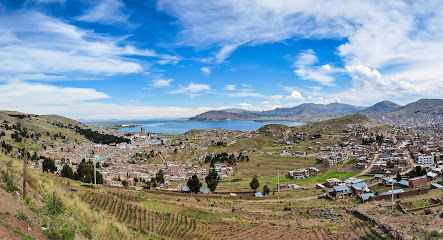
Cerrito Huajsapata
Discover breathtaking panoramic views of Puno at Cerrito Huajsapata, a serene observation deck that showcases Peru's stunning landscapes and rich culture.
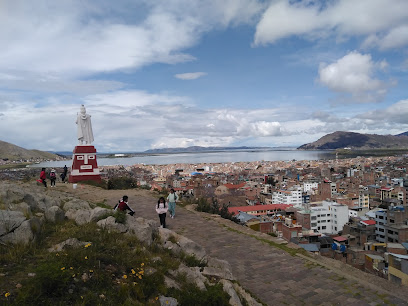
Mirador El Condor
Discover Mirador El Condor, an unmissable viewpoint in Puno offering stunning vistas of Lake Titicaca and the majestic Andes.
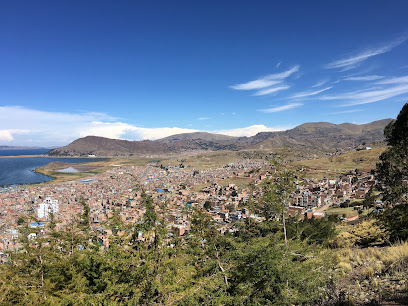
Arco Deustua
Discover Arco Deustua in Puno, a symbol of independence and vibrant local culture, perfect for your travel diary.
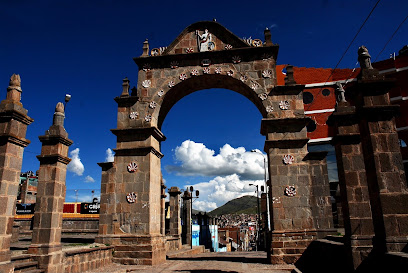
Puno Cathedral
Explore the architectural beauty and historical significance of Puno Cathedral, a captivating landmark in the heart of Peru's cultural hub.
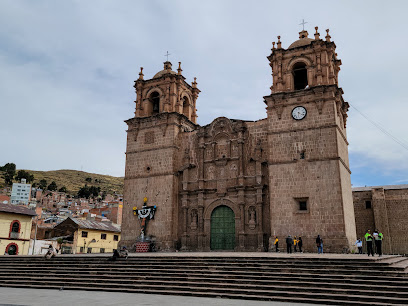
Museo Carlos Dreyer
Explore the artistic treasures of Museo Carlos Dreyer in Puno, Peru, where culture and history intertwine through exquisite collections and exhibits.
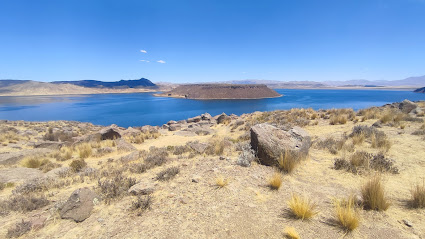
Roca Sagrada
Explore Roca Sagrada in Bolivia, an archaeological gem where breathtaking landscapes and rich cultural heritage intertwine for an unforgettable travel experience.
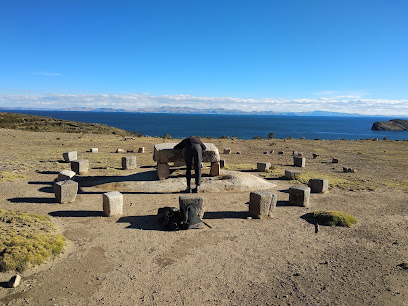
Coca Museum & Custumes
Explore the Coca Museum & Costumes in Puno, Peru – a cultural treasure revealing the historical significance of the coca leaf and vibrant local traditions.
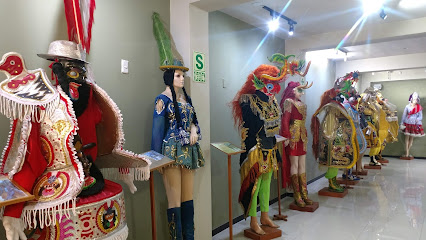
Inca Stairs
Explore the ancient Inca Stairs in Comunidad Yumani, a breathtaking blend of history, culture, and stunning views of Lake Titicaca.
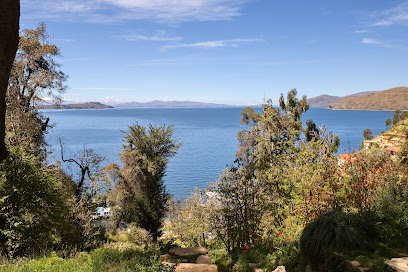
Complejo Turístico Flotante UROS TITICACA KURMI LAGO TITICACA PERÚ
Experience the enchanting beauty and rich culture of Uros Titicaca Kurmi on the floating islands of Lake Titicaca, Peru.
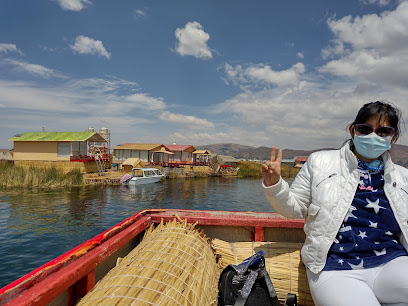
Chincana Labyrinth
Explore the mystical Chincana Labyrinth on Isla del Sol, a historical gem of the Inca civilization with breathtaking views of Lake Titicaca.
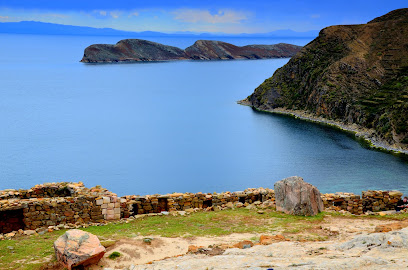
Gate of the Moon
Explore the ancient mysteries and stunning architecture of the Gate of the Moon in Tiwanaku, Bolivia, a UNESCO World Heritage Site.
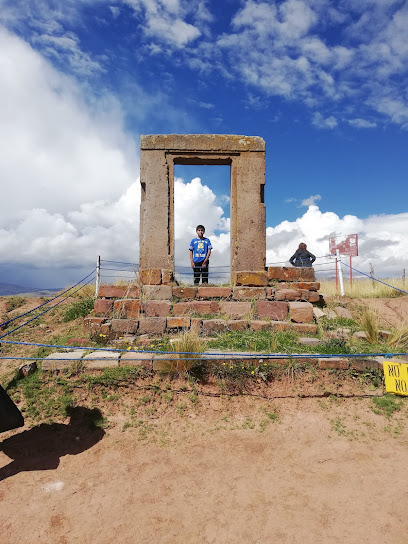
Essential places to dine
Lake Titicaca
Experience the enchanting beauty and rich culture of Lake Titicaca – a breathtaking destination at high altitude offering unforgettable adventures.
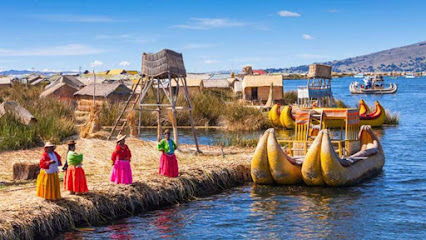
TITICACA KURMI LODGE PERU
Discover cultural richness and natural beauty at Titicaca Kurmi Lodge in Peru's breathtaking Lake Titicaca region.

Gustu
Experience authentic Bolivian cuisine at Gustu in La Paz - where local ingredients meet innovative culinary artistry.
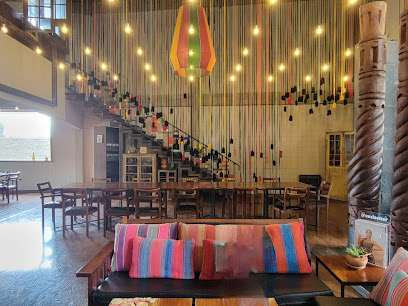
Taquile Island
Experience the charm of Taquile Island: A serene getaway in Lake Titicaca known for its stunning views and rich cultural heritage.
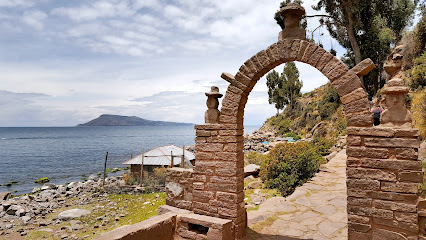
Hostal La Cúpula
Discover comfort and breathtaking views at Hostal La Cúpula, your perfect stay in Copacabana by Lake Titicaca.

Hostal Las Olas
Discover tranquility at Hostal Las Olas with breathtaking views of Lake Titicaca and easy access to local attractions in Copacabana.

Hotel Rosario Lago Titicaca
Experience breathtaking views and cultural richness at Hotel Rosario Lago Titicaca, your perfect retreat by the serene waters.

Isla del Sol
Discover Isla del Sol: A breathtaking island steeped in Incan history and culture on Lake Titicaca.
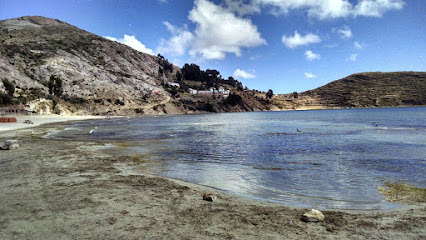
Inca Utama Hotel
Experience Bolivian culture and breathtaking views at Inca Utama Hotel on Lake Titicaca's shores.
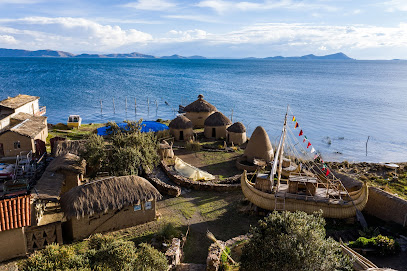
Restaurant La fortaleza del sabor
Experience the rich flavors of Bolivia at Restaurant La Fortaleza del Sabor in Copacabana - A must-visit culinary destination for every tourist.
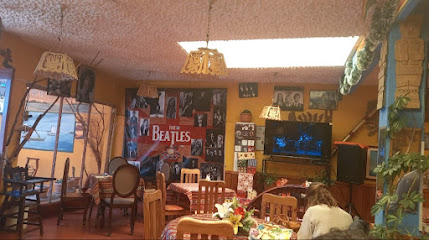
Restaurante - Uñtasiwi (Viewpoint)
Experience exquisite Bolivian cuisine at Uñtasiwi Restaurant with breathtaking views of Lake Titicaca—where every meal is a feast for your senses.
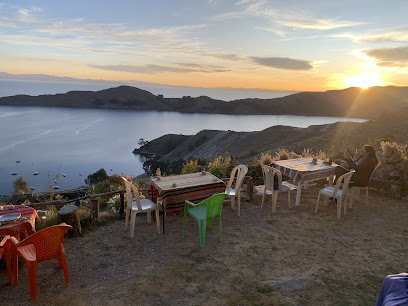
Las Velas
Discover exquisite Bolivian cuisine with breathtaking views at Las Velas on Isla del Sol.
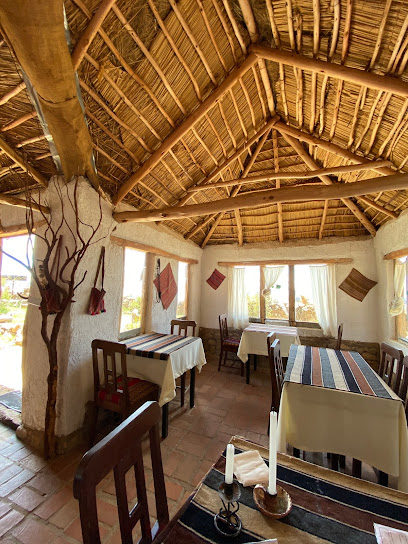
Pachamama
Experience authentic South American flavors at Pachamama with breathtaking views of Lake Titicaca in Comunidad Yumani.
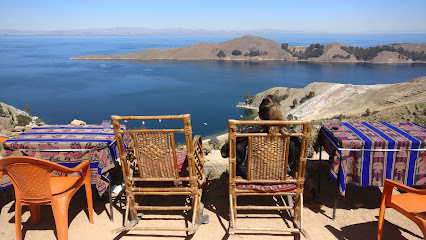
Ecolodge La Estancia
Discover tranquility at Ecolodge La Estancia on Lake Titicaca – where nature meets comfort in an eco-friendly paradise.

La Orilla
Experience authentic Latin American cuisine at La Orilla, a cozy restaurant near Lake Titicaca in Copacabana.
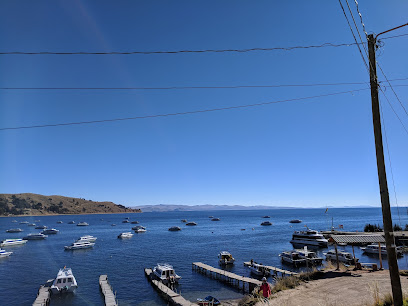
Markets, malls and hidden boutiques
Lake Titicaca
Experience the enchanting beauty and rich cultural heritage of Lake Titicaca, the world's highest navigable lake, nestled between Peru and Bolivia.
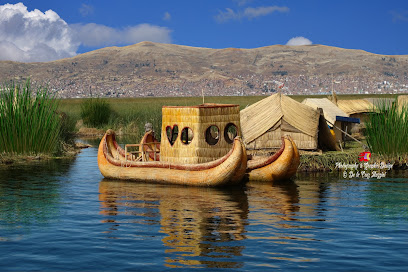
Reserva Nacional Titicaca
Discover the breathtaking beauty and rich biodiversity of Reserva Nacional Titicaca, a captivating national reserve in Peru.
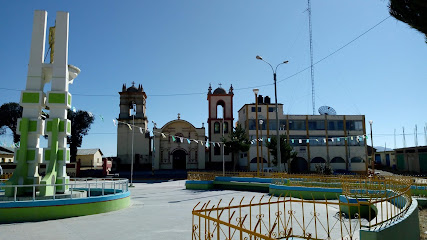
Hostal La Cúpula
Discover the charm of Copacabana at Hostal La Cúpula, where comfort meets local culture near Lake Titicaca.

Titilaka
Experience the perfect blend of luxury, culture, and stunning landscapes at Titilaka, a premier hotel on Lake Titicaca's shores.

Alax Pacha
Experience the best of Copacabana at Alax Pacha, where delicious pizza meets a cozy atmosphere, perfect for every traveler.
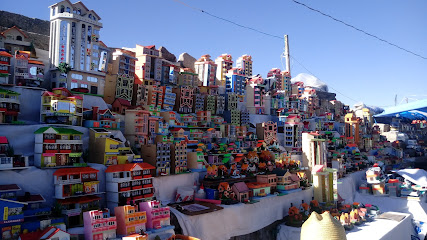
Roca Sagrada
Discover Roca Sagrada, a sacred archaeological site in Bolivia, where history and breathtaking landscapes meet in perfect harmony.
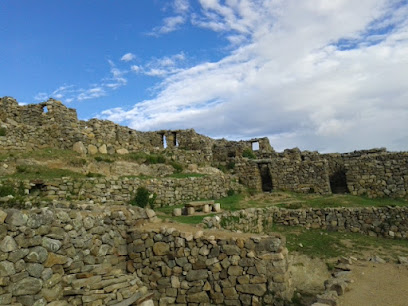
Inca Stairs
Discover the ancient Inca Stairs in Comunidad Yumani, a breathtaking tourist attraction offering stunning views of Lake Titicaca and rich cultural heritage.
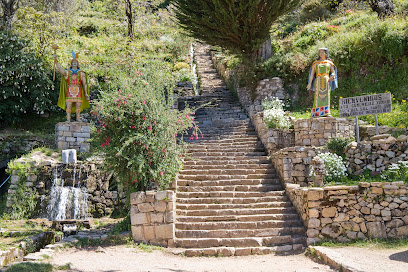
LAUNDRY SERVICE y TIENDA DE ABARROTES
Explore unique Russian flavors and convenient laundry services in the heart of Copacabana, all while soaking in the beauty of Lake Titicaca.

Chincana Labyrinth
Discover the ancient Incan mysteries at Chincana Labyrinth on Isla del Sol, where history meets breathtaking views of Lake Titicaca.
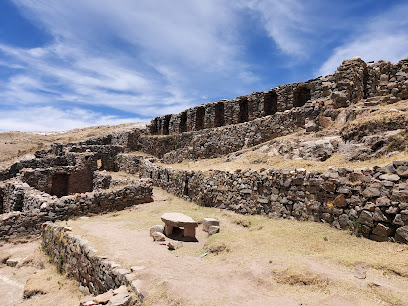
Posada del Inca Eco-Lodge
Experience the magic of Isla del Sol at Posada del Inca Eco-Lodge, where comfort meets nature in a serene Bolivian retreat.
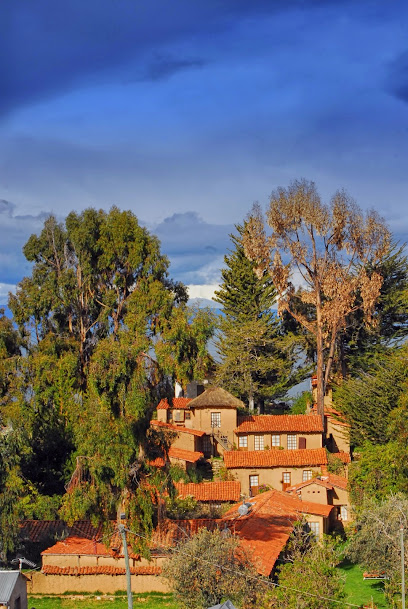
Casa de la Luna
Discover tranquility and cultural richness at Casa de la Luna, your serene hotel retreat on Isla del Sol, Lake Titicaca.
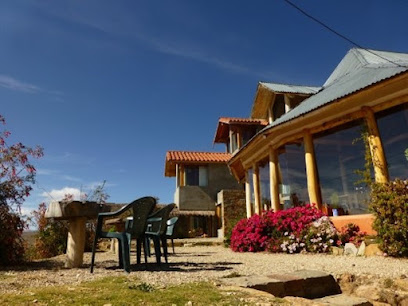
Camicachi
Discover the vibrant shopping and dining experience at Camicachi, Huaycho's premier shopping mall, where culture meets modernity.
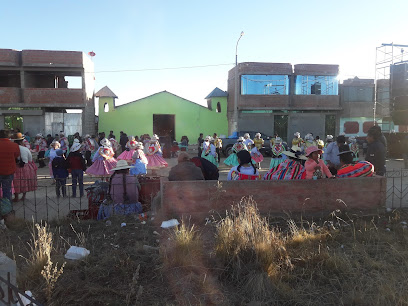
QUINUA TAMPU
Experience breathtaking views and artisan coffee at Quinua Tampo, the perfect rest stop in Juli, Peru for weary travelers and explorers alike.
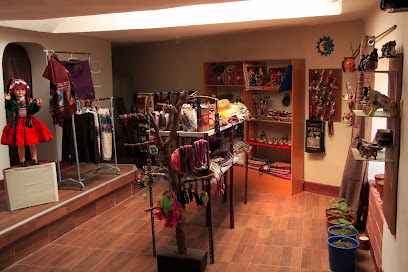
TUNTAS ANDINO S.A.C.
Discover local crafts and artisanal goods at TUNTAS ANDINO S.A.C., a vibrant store in Ilave, Peru, perfect for immersive cultural shopping experiences.
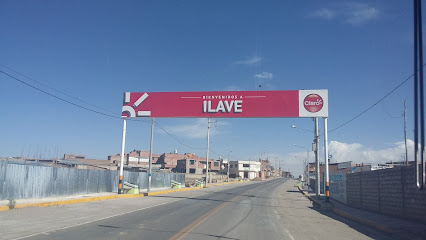
Imperio del Sol
Discover tranquility at Imperio del Sol, a charming hotel on Isla del Sol, offering stunning views and a gateway to Lake Titicaca's rich history.

Essential bars & hidden hideouts
Alax Pacha
Experience the best of Copacabana dining at Alax Pacha, where delicious pizzas and vegetarian delights come together in a warm, inviting atmosphere.
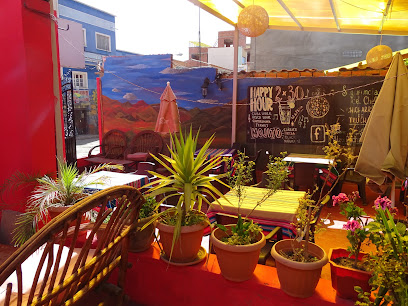
Restaurante - Uñtasiwi (Viewpoint)
Experience the best of Bolivian cuisine with stunning views at Restaurante Uñtasiwi in Comunidad Yumani.
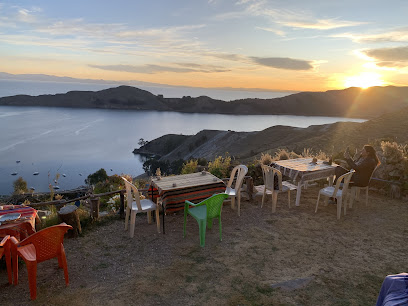
Positive Rock 'n Reggae
Experience the vibrant nightlife at Positive Rock 'n Reggae in Puno, where music, good vibes, and delicious drinks come together in a cultural celebration.
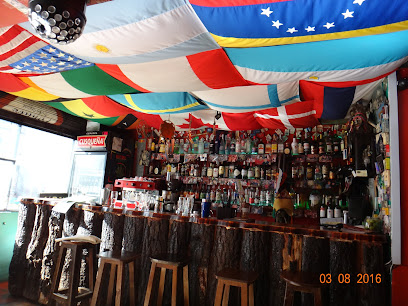
Las Velas
Discover the enchanting flavors of Bolivian cuisine at Las Velas, set on the stunning Isla del Sol with breathtaking views and a magical ambiance.
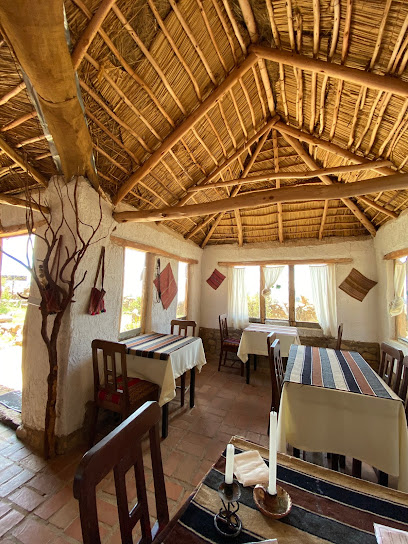
Pachamama
Discover the vibrant flavors of South America at Pachamama, a culinary treasure in Comunidad Yumani, perfect for an unforgettable dining experience.
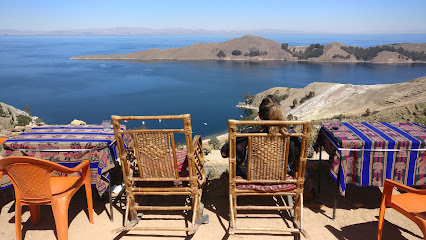
Ecolodge La Estancia
Discover tranquility and cultural richness at Ecolodge La Estancia on Sun's Island, Lago Titicaca, your perfect Bolivian getaway.

Kamizaraky Rock
Savor the authentic taste of Peru at Kamizaraky Rock, a premier grill restaurant in Puno, offering a delightful culinary experience.
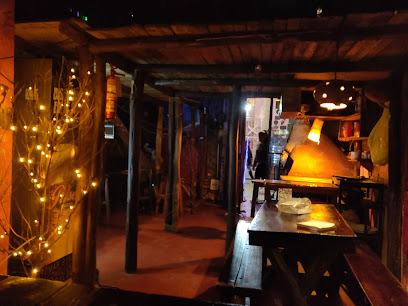
Km Zero
Discover Km Zero, a lively bar in Copacabana where local flavors and vibrant nightlife create unforgettable experiences.
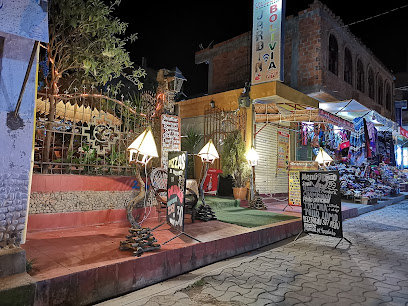
Restaurante Challapampa
Experience the best of Bolivian cuisine with stunning views at Restaurante Challapampa on Isla Del Sol.

Kusillos Bar
Experience the vibrant nightlife of Puno at Kusillos Bar, where locals and tourists gather for great drinks and lively entertainment.
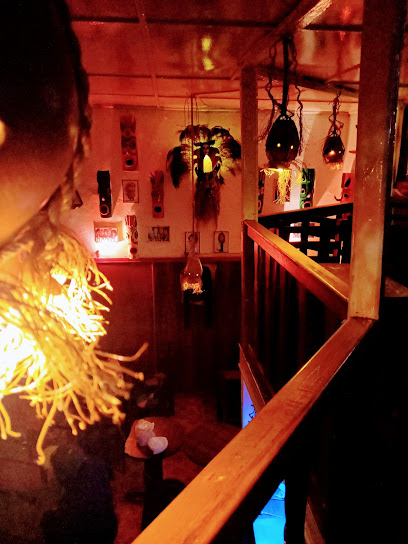
Restaurant & Bar BEK
Experience the vibrant flavors of Bolivia at Restaurant & Bar BEK, a top gastropub in Copacabana offering a unique blend of local and contemporary cuisine.
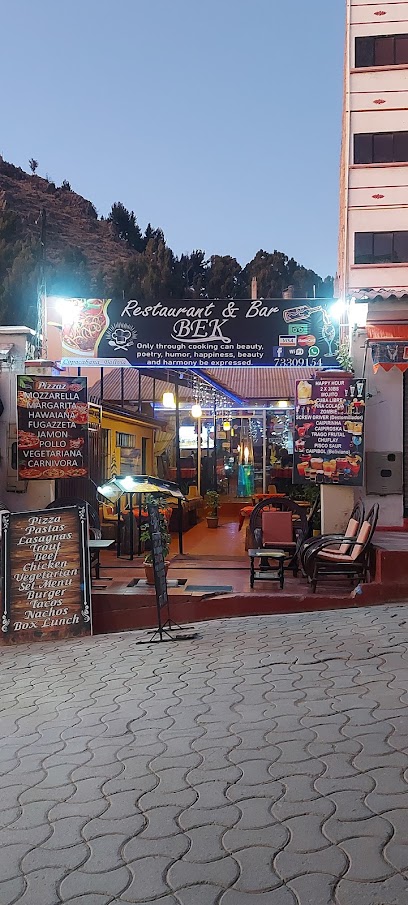
Taquile
Explore Taquile Island, a serene escape in Lake Titicaca with rich traditions, stunning views, and authentic Peruvian culture.

BAR «el Que Te Dije»
Immerse yourself in the lively atmosphere of Bar ‘el Que Te Dije’ in Puno, where local culture and vibrant nightlife await every visitor.

Pankara Bar
Experience the vibrant nightlife at Pankara Bar in Puno, where local culture meets a lively atmosphere and refreshing drinks.
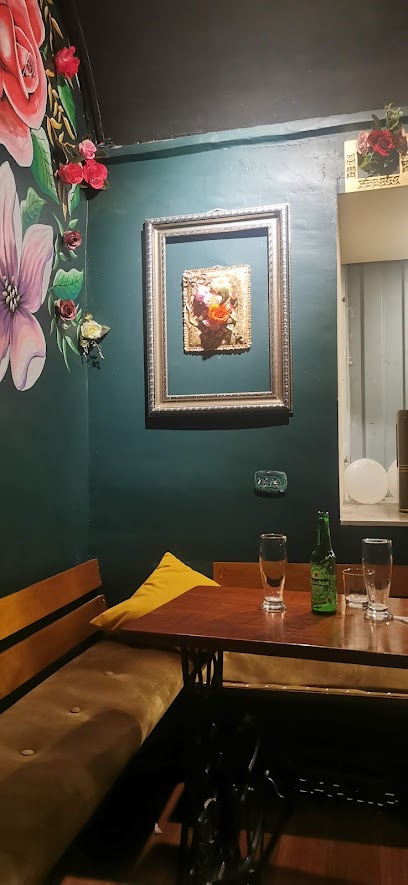
Restaurant Lago Titicaca
Experience authentic Bolivian cuisine at Restaurant Lago Titicaca, where breathtaking lake views meet delightful local flavors in a serene setting.

Local Phrases about Lake Titicaca
-
- HelloJupanaka
[hoo-pah-nah-kah] - GoodbyeJupanaka
[hoo-pah-nah-kah] - YesArí
[ah-ree] - NoMana
[mah-nah] - Please/You're welcomeAñay
[ahn-yah] - Thank youJichhata
[hich-hah-tah] - Excuse me/SorryYatichay
[yah-tee-chai] - How are you?Imañatakis?
[ee-mahn-yah-tah-kees] - Fine. And you?Janiña. Qamkun?
[hah-nee-nyah. kahm-koon] - Do you speak English?Imata ingles simikun?
[ee-mah-tah een-glays see-mee-koon] - I don't understandManan yachani
[mah-nahn yah-chah-nee]
- HelloJupanaka
-
- I'd like to see the menu, pleaseMenuyu qhawayta munanki
[meh-noo-yoo kah-wah-ee-tah moo-nahn-kee] - I don't eat meatCh'arki mikhuyani
[char-kee mee-khoo-yah-nee] - Cheers!Q'ara
[kah-rah] - I would like to pay, pleasePagaranakama munani
[pah-gah-rah-nah-kah-mah moo-nah-nee]
- I'd like to see the menu, pleaseMenuyu qhawayta munanki
-
- Help!Janiwachi!
[hah-nee-wah-chee] - Go away!Llakiwan
[yah-kee-wahn] - Call the Police!Pulisiyta llamkani!
[poo-lee-see-tah yahm-kah-nee] - Call a doctor!Taqwayta llamkani!
[tahk-wahy-tah yahm-kah-nee] - I'm lostManan lurasqayki
[mah-nahn loo-rahs-kahy-kee] - I'm illManan sumaqmi
[mah-nahn soo-mahk-mee]
- Help!Janiwachi!
-
- I'd like to buy...Amarkani
[ah-mahr-kah-nee] - I'm just lookingQillqayani
[keel-lyah-yah-nee] - How much is it?Imaynallatak?
[ee-mah-yah-lyah-tahk] - That's too expensiveQhalikama
[kah-lee-kah-mah] - Can you lower the price?Qhispichiyta munanki?
[kees-pee-chee-chee-tah moo-nahn-kee]
- I'd like to buy...Amarkani
-
- What time is it?Imata qhatu?
[ee-mah-tah kah-too] - It's one o'clockJuk'ampi
[hoo-kahm-pee] - Half past (10)Iskay pachakuna
[ees-kahy pah-chah-koo-nah] - MorningCh'aski
[char-skee] - AfternoonP'unchay
[poon-chai] - EveningT'unti
[toon-tee] - YesterdayQayna
[kye-nah] - TodayKunan
[koo-nahn] - TomorrowMaypi
[mye-pee] - 1Juk
[hoo-k] - 2Iskay
[ees-kai] - 3Kimsa
[keem-sah] - 4Tawa
[tah-wah] - 5Pisqa
[pees-kah] - 6Suyu
[soo-yoo] - 7Qanchis
[kahn-chees] - 8Pusaq
[poo-sahk] - 9Isqun
[ees-koon] - 10Chunka
[choon-kah]
- What time is it?Imata qhatu?
-
- Where's a/the...?Mana kuti...
[mah-nah koo-tee...] - What's the address?Imaynatawa
[ee-mah-yah-nah-tah-wah] - Can you show me (on the map)?Mapanakuqni?
[mah-pah-nah-kook-nee] - When's the next (bus)?Qhipa k'uchuy?
[kee-pah koo-choo-ee] - A ticket (to ....)Ch'itara (pi...)
[chee-tah-rah (pee...)]
- Where's a/the...?Mana kuti...
History of Lake Titicaca
-
Lake Titicaca holds a sacred place in the lore of the Inca civilization. According to Incan mythology, the lake is the birthplace of the sun god Inti and the first Inca king, Manco Capac, and his sister-wife, Mama Ocllo. They are said to have emerged from the lake's waters to establish the Inca Empire. This legend underscores the lake's spiritual and cultural significance to the indigenous people of the Andes.
-
Long before the rise of the Inca, the Tiwanaku civilization thrived near the southern shores of Lake Titicaca from around 200 AD to 1000 AD. The Tiwanaku people were master builders and engineers, known for their impressive stone structures and sophisticated agricultural techniques. The ruins of the ancient city of Tiwanaku, located near the lake, are a testament to their ingenuity and remain one of Bolivia's most important archaeological sites.
-
In the 16th century, Spanish conquistadors arrived in the region, bringing with them dramatic changes. The Spanish were drawn to the area not only by its strategic location but also by its wealth of natural resources, including precious metals. They imposed their rule on the indigenous populations, leading to significant cultural and social disruptions. The introduction of Christianity also left a lasting impact, as evidenced by the many colonial-era churches that dot the region.
-
The Aymara people are one of the oldest and most resilient indigenous groups in the Lake Titicaca region. They have maintained their traditional way of life and customs despite centuries of external influences. The Aymara are renowned for their expert weaving, agriculture, and deep spiritual connection to the lake. Their presence and cultural practices continue to enrich the cultural tapestry of the area.
-
Isla del Sol (Island of the Sun) and Isla de la Luna (Island of the Moon) are two islands steeped in myth and history. Isla del Sol is believed to be the birthplace of the sun in Incan mythology and is home to numerous Inca ruins, including the Sacred Rock and the Pilkokaina Palace. Isla de la Luna is said to be where the moon goddess was born and features the ruins of an ancient convent for priestesses known as the Iñak Uyu. Both islands are central to the spiritual traditions of the region.
-
Today, Lake Titicaca continues to be a vital cultural and economic hub for the local communities. It supports fishing and agriculture and is a burgeoning tourist destination. Efforts to preserve its ecological and cultural heritage are ongoing, as the lake remains a source of inspiration and sustenance for the people who live along its shores. The annual festivals, such as the Feast of the Virgin of Candelaria, showcase the enduring cultural vibrancy of the region.
Lake Titicaca Essentials
-
The primary gateway to Lake Titicaca in Bolivia is the city of La Paz. From La Paz, you can take a bus or a private vehicle to the town of Copacabana, which is the main access point to Lake Titicaca. The journey from La Paz to Copacabana typically takes about 3.5 to 4 hours by road. You can also reach Copacabana from Puno, Peru, which is another major access point to the lake. There are daily buses and private tours that operate between Puno and Copacabana.
-
Within the Lake Titicaca area, you can get around by local buses, taxis, or boats. Copacabana is a small town, and many attractions are within walking distance. For exploring the islands, such as Isla del Sol and Isla de la Luna, regular boat services are available from Copacabana. Renting a bike is also a popular option for exploring the lakeshore and nearby areas at your own pace.
-
The official currency in Bolivia is the Bolivian Boliviano (BOB). Credit cards are accepted in some hotels, restaurants, and larger shops in Copacabana, but it is advisable to carry cash, especially when visiting the islands or smaller establishments. ATMs are available in Copacabana, but it is wise to withdraw sufficient cash in La Paz before traveling to ensure you have enough funds.
-
Lake Titicaca and Copacabana are generally safe for tourists. However, like any travel destination, it is advisable to take standard precautions. Avoid walking alone at night in unfamiliar areas and keep an eye on your belongings in crowded places. While Copacabana is relatively safe, it is always best to stay vigilant and aware of your surroundings. Be cautious when hiking on the islands, as some trails can be steep and challenging.
-
In case of emergency, dial 110 for police assistance and 118 for medical emergencies. Copacabana has a small medical clinic, but for more serious medical issues, it is recommended to seek assistance in La Paz. It is advisable to have travel insurance that covers medical emergencies. Pharmacies are available in Copacabana for minor health issues and over-the-counter medications.
-
Fashion: Do dress in layers, as the weather can be unpredictable. Avoid wearing revealing clothing, especially in rural areas and religious sites. Religion: Do respect local customs and traditions. Always ask for permission before taking photos of people or religious ceremonies. Public Transport: Do be respectful and give up your seat to elderly passengers. Don't eat or drink on public transport. Greetings: Do greet people with a handshake or a friendly 'Buenos días' (Good morning) or 'Buenas tardes' (Good afternoon). Eating & Drinking: Do try local delicacies and accept food offerings graciously. Don't refuse hospitality, as it is considered impolite.
-
To experience Lake Titicaca like a local, visit the local markets in Copacabana where you can buy fresh produce and traditional Bolivian goods. Engage with locals, as they are often friendly and willing to share stories about the area's history and culture. Don't miss visiting the Basilica of Our Lady of Copacabana and the Inca sites on Isla del Sol. For a unique experience, take part in a traditional ceremony with a local shaman, offering insights into the spiritual significance of the lake.
Nearby Cities to Lake Titicaca
-
Things To Do in Puno
-
Things To Do in La Paz
-
Things To Do in Arequipa
-
Things To Do in Tacna
-
Things To Do in Arica
-
Things To Do in Cochabamba
-
Things To Do in Cusco
-
Things To Do in Machu Picchu
-
Things To Do in Iquique
-
Things To Do in Sucre
-
Things To Do in Potosi
-
Things To Do in Uyuni
-
Things To Do in Ayacucho
-
Things To Do in Santa Cruz de la Sierra
-
Things To Do in Ica









